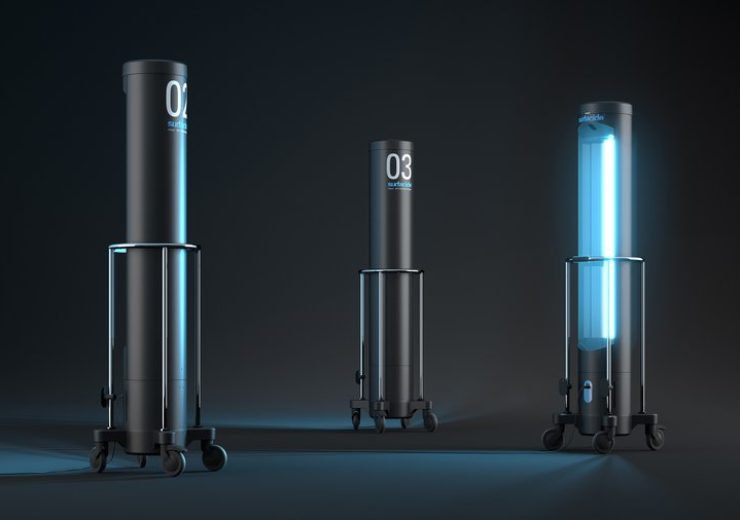UV-C decontamination technology can decontaminate imaging equipment of viral infectious diseases in minutes

Surfacide's UVC decontamination solution. (Credit: Canon Medical Systems Corporation)
Hospitals and institutions are regularly using imaging as a frontline tool for triaging patients, and disinfection after use can be time consuming when every second counts. To meet the need for fast decontamination, Canon Medical Systems USA, Inc. has partnered with Surfacide to offer Helios – a rapid decontamination tool for its imaging equipment.
The Surfacide Helios system provides an automated UV-C decontamination technology that significantly reduces bacteria, spores and viruses and is effective against a variety of advanced viral infectious diseases. Helios incorporates multiple automated UV-C emitters that work together to provide decontamination of the room in minutes to help improve workflow.
“At Canon Medical, our priority is to support our customers and their patients by providing them not only with innovative imaging systems, but also the latest technology advancements that can impact their outcomes and workflow,” said Satrajit Misra, vice president, Marketing and Strategic Development, Canon Medical Systems USA, Inc. “In the current healthcare climate, partnering with Surfacide to offer a solution that can quickly, easily and effectively decontaminate an imaging system can help hospitals and institutions manage their high throughput and keep patients safe by helping to prevent the spread of infection.”
“Today, two innovative technology leaders are focused on making imaging suites and hospitals safer for hospital healthcare workers and patients,” says Gunner Lyslo, Founder & CEO of Surfacide LLC. “Surfacide and Canon Medical are coming together at an urgent time when safety and infection prevention is paramount throughout the world. Surfacide and its multi-emitter UV-C technology will fight infectious diseases and decontaminate surfaces to create a much safer environment for patients and healthcare workers when it is needed the most.”
Source: Company Press Release
